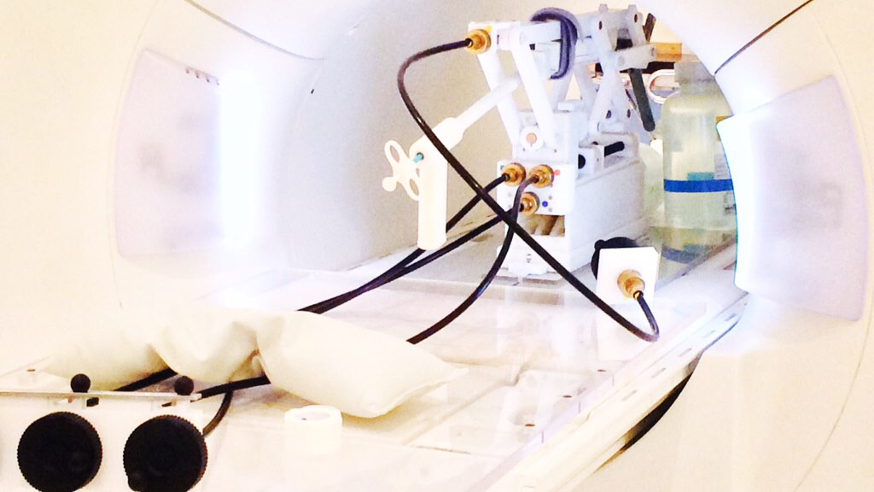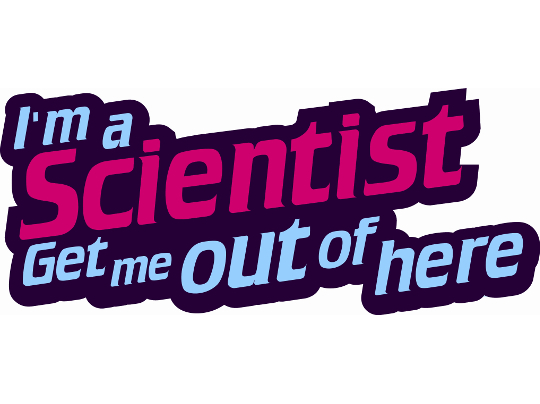“Can you write a poem in one minute about how you became a scientist?”
I found myself in a live chat room with 26 teenagers at 9:30 on a Tuesday morning. Questions were coming in thick and fast via the chat log, and I was doing my best to keep up with them while maintaining some semblance of intelligence, when the above question popped up. A poem? One minute? OK, here goes:
“There once was a guy named Hugh,
who knew exactly what he wanted to do.
He took a test and beat the rest,
and whooped all his classmates at school.”
I replied. Not my best poetical effort, but a cheeky limerick would have to do.
“Boss poem, Hugh” came the response. “I’m voting for you!”
And then on to the next question:
“If you saw an endangered species eating an endangered plant, what would you do?”
With barely a split second to think between answers, the insightful, hilarious and often leftfield chat questions from inquisitive teenage minds were really putting me to the test.

I was taking part in an online science outreach project called I’m a Scientist: Get me out of here in which scientists from all areas are encouraged to build an online profile, answer questions and take part in live chats with school children from across the UK. The event takes its name from a popular celebrity/jungle-themed TV show, and is run in a similar fashion – scientists are pitted against each other while students get to vote on who stays and who gets evicted.
I took part in the Light Zone, sponsored by the Science and Technology Facilities Council (STFC), as my scientific background includes expertise in X-rays and medical imaging. The other four scientists in my zone worked with different kinds of laser, so together we covered a good portion of the electromagnetic spectrum.
We each set up an online profile to help the children get a better understanding of what we do and what our working life looks like, which included a description of our working day and some photos. Mine had photos of the MRI scanners at The Royal Marsden Hospital and described my research life at The Institute of Cancer Research which includes X-rays, MRIs and a prototype 3D-printed robot for performing prostate biopsies inside an MRI scanner.
“Can cancer get cancer?”
The highlight of the two weeks with I’m a Scientist is definitely the live chat sessions. Schools pre-book half-hour slots of time, during which a class of children log on and fire questions relentlessly at the scientists. And I really do mean relentlessly – the chat log whizzes up the screen as questions about aliens to zebras come pouring in.
It is a stark reminder that this generation of children is far more social media savvy than mine! Questions in the chat session can be answered by any of the scientists, and children can reply, ask follow-on questions, or even debate the scientists on their knowledge. On more than a few occasions the scientists in the chat were caught out by distinctly esoteric and tricky questions – a personal favourite was “Can cancer get cancer?”
After each chat session the pupils can then send more questions to the scientists’ profiles – by the end of two weeks I’d answered hundreds of questions on my profile alone, and spoken to countless more pupils in the live chat. The majority of questions sent to me were about medicine, cancer research, 3D printing and X-rays, so this was a great opportunity to help raise awareness of the ICR and the future of cancer diagnostics and treatment.
After the questions came the voting…
The last five days of the two week event are the ‘eviction’ days. Each student gets a vote (which they can change at will) and at the end of each day the votes are counted. Thanks to a combination of aggressive hashtagging, humour and high engagement levels, I managed to get enough votes to survive. By the final day I was announced the winner, and given a £500 prize to put towards a further science outreach project of my choosing. The whole event was extremely well organised and huge thanks goes out to all the staff who run things behind the scenes.
Reaching out further
I plan on using this money to fund a new outreach project. Having been involved for a few years with 3D printing both in my spare time and in my research with a 3D-printed MR-safe robot for prostate biopsies (see below picture), I decided to launch an initiative to get a 3D printer for a school in my local STEM network in Sussex for which I am an ambassador.
The idea is to supply a printer and set up a science club at a chosen school for children to learn about the technology with hands-on experience. Via Twitter and the STEMSussex network I have put out a call for schools to tell me why they deserve a 3D printer and what they would do with it, and I will be choosing a worthy winner in early May.
In addition to this I have teamed up with the generous CREATE Education Project who are topping up the prize fund to help supply a printer, giving out free resources for schools to plan lessons, plus (and this is a new exciting announcement) they are very generously offering a second prize of a printer on loan for one month to a runner-up!

3D-printed prostate biopsy robot prototype undergoing pre-clinical testing in an MRI scanner at RMH.
This outreach project, part funded by my prize from I’m a Scientist, aims to create further awareness of the possibilities of 3D-printing technology in medicine. Already 3D-printing has been advancing rapidly in various medical fields, with applications ranging from bespoke orthopaedic implants for cancer sufferers, replacing an entire skull in a neurosurgical world-first, and early research here at the ICR into printing replica organs for use as ex-vivo cancer models. Hopefully the next generation of scientists will be at home with this exciting technology and will be able to usher in an entire new era of bespoke medicine.
Taking part is what counts
I’m not the first ICR researcher to have taken part in ‘I’m a Scientist’. In 2013 Becky Cook won the Cadmium Zone and split her prize fund between the British Science Association and STEMNet. Anyone interested in educational outreach should definitely apply to take part – I highly encourage you to do so. The experience is exciting, eye opening and rewarding in so many ways, not to mention the most fun you can have while sitting at your desk! I have learnt new communication skills and developed new contacts both inside and outside of my research field.
If you have a knack for answering exotic questions and fancy yourself as a science communicator then you have nothing to lose! In fact you might even win.
If you fancy having a go at answering questions and raising awareness about STEM subjects you can apply to take part in the next round of I’m a Scientist here.
If you would like to know more about my 3D printer school project then follow me on Twitter or on my blog.
If you would like to help top up the fund to help buy a 3D printer please contact me at [email protected]. All donations are welcome!
